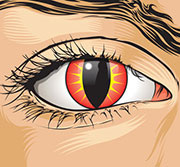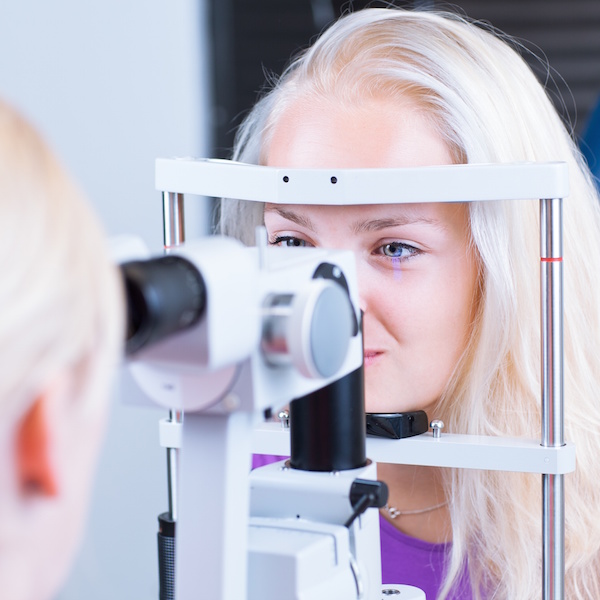
THURSDAY, Oct. 24 (HealthDay News) — Laura Butler knew something was wrong when she felt a pain in her eye while driving that was so bad she had to pull over.
Butler, who lives in West Virginia and has brown eyes, said she had just started trying out decorative blue contact lenses that she’d bought for $30 from a souvenir shop in 2010. The “excruciating” pain in her left eye occurred a day into wearing the new lenses, which took 20 minutes to remove since they had become stuck to her eyes like suction cups.
Butler said she drove home in “indescribable” pain and was later diagnosed with a corneal abrasion.
“The doctor said it was as if someone took sandpaper and sanded my cornea,” she said in a news release from the U.S. Food and Drug Administration. The agency is releasing its annual warning about novelty contact lenses, which are very popular at Halloween.
Butler said her eye doctor told her that “he wasn’t going to sugar-coat it, that I could lose my eyesight or could lose my eye.”
Those things didn’t happen, but Butler couldn’t drive for eight weeks, had a drooping eyelid for five months, and still has lowered vision in her eye. Her medical bill for the incident totaled about $2,000.
Butler’s story isn’t uncommon, and the FDA is warning consumers that if they plan to buy decorative contact lenses for Halloween, there are potential risks of which they need to be aware.
Decorative contact lenses are not cosmetics or over-the-counter products, the agency said. They are regulated medical devices and outlets that advertise them as cosmetics or sell them without a prescription are breaking the law.
As with regular contact lenses, one size does not fit all eyes, the FDA said. That’s why eye doctors must measure each eye to properly fit the lenses and evaluate how your eye responds to contact lens wear.
According to the FDA, a poor fit can cause serious damage, including:
- Scratches on the cornea (the clear dome of tissue over the iris, which gives you your eye color)
- Corneal infection
- Conjunctivitis (pink eye)
- Decreased vision or blindness
Dr. Bernard Lepri, an FDA optometrist, said in an agency news release that the danger isn’t with the contacts themselves, however.
“It’s the way people use them improperly — without a valid prescription, without the involvement of a qualified eye-care professional or without appropriate follow-up care,” he said.
You should never buy decorative contact lenses from street vendors, salons, beauty-supply stores, boutiques, flea markets, novelty stores, Halloween stores, convenience stores, beach shops or on the Internet (unless the site requires a prescription), according to the FDA.
There are ways to safely buy and use decorative contact lenses, however. First, get an eye exam from a licensed eye doctor (ophthalmologist or optometrist), even if you think your vision is perfect. Get a valid prescription that includes the brand name, lens measurements and an expiration date. Lenses should be purchased only from a seller who requires you to provide a prescription, whether you go in person or shop online.
All of this isn’t necessarily expensive: Butler found out that her optometrist could have ordered her two sets of decorative lenses for $50 and charged her $60 for the eye exam.
Do not expect your eye doctor to prescribe “anime,” or circle, lenses, however. These bigger-than-normal lenses that give the wearer a wide-eyed, doll-like look have not been approved by the FDA.
As with any contact lenses, consumers should follow directions for cleaning, disinfecting and wearing the lenses, and visit their eye doctor for follow-up eye exams. If you develop signs of possible eye infection — redness, eye pain that doesn’t go away after a short time and a decrease in vision, see your doctor immediately, the FDA said.
Butler said she learned the hazards of decorative, fashion lenses the hard way. Her advice this Halloween for anyone considering these products: “Take the time to go to the doctor, pay the extra money and save yourself the agony.”
More information
The American Optometric Association has more about decorative contact lenses.
Copyright © 2025 HealthDay. All rights reserved.

